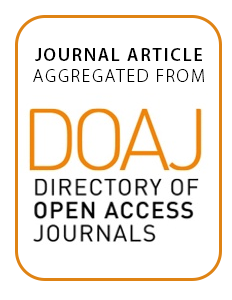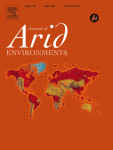Elsevier is a world-leading provider of information solutions that enhance the performance of science, health, and technology professionals.
All knowledge begins as uncommon—unrecognized, undervalued, and sometimes unaccepted. But with the right perspective, the uncommon can become the exceptional.
That’s why Elsevier is dedicated to making uncommon knowledge, common—through validation, integration, and connection. Between our carefully-curated information databases, smart social networks, intelligent search tools, and thousands of scholarly books and journals, we have a great responsibility and relentless passion for making information actionable.
Members:
Resources
Displaying 246 - 250 of 1605Land Degradation as a Security Threat Amplifier: The New Global Frontline
Land degradation is a widespread crisis, destabilizing nations and communities on a global scale. To be clear, food will be less plentiful (and thus more expensive) unless responsible land management and res- toration is given priority on the international political agenda. The commitment to halt and reverse land degradation will undoubtedly feature prominently in post-2015 development and climate agendas.
Choosing the best city of the future
This paper describes various possibilities of the cities of futures considering various constraints and demand of society, environment and geography. The need for future cities arises because of the rapid growth in population and thereby causing a decline in the living standards. In the United States itself, many people are moving to cities every day. Today cities are getting crowded and if the influx continues at the same rate, current cities will become unmanageable and unlivable.
The transformation of urban industrial land use: A quantitative method
A large number of cities around the world today owe their land use growth to the rapid development of industrial areas. The spatial structure of industrial distribution in cities shape urban spatial morphology linking with land use, transportation, economic activities, and housing. Meanwhile, growth and expansion of city population and land use reconfigure the spatial structure of industrial distribution. Research into urban industrial spatial distribution and its transformation process may help urban planners and decision makers understand the land use and population dynamics of a city.
Responding to mobility constraints: Recent shifts in resource use practices and herding strategies in the Borana pastoral system, southern Ethiopia
This paper investigates how Borana pastoralists of southern Ethiopia have adapted resource use and livestock mobility practices amid multiple constraints including rising population, loss of rangeland to other pastoral communities and changing access rights, among others. This study uses an innovative multi-scalar methodology to understand how herders' grazing management decisions are made within a context of communal regulations governing access to resources.
Explaining spatial diversity in Latin American rural development : structures, institutions, and coalitions
This article summarizes the results of a research program conducted in 11 Latin America countries, addressing two
questions: (1) what factors determine territorial development dynamics that lead to economic growth, poverty reduction, and improved
income distribution? (2) What can be done to stimulate this kind of territorial dynamics? We highlight five “bundles of factors” that we
found in 19 case studies of territorial development 1, as well as the role of social territorial coalitions that appear to be necessary for





